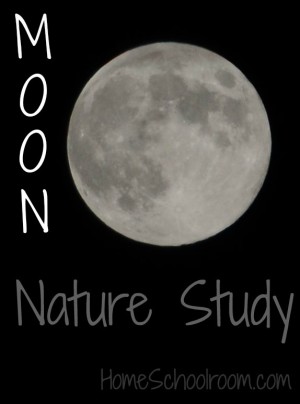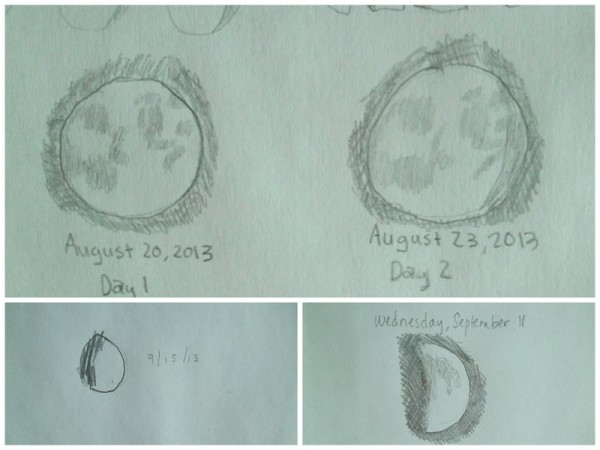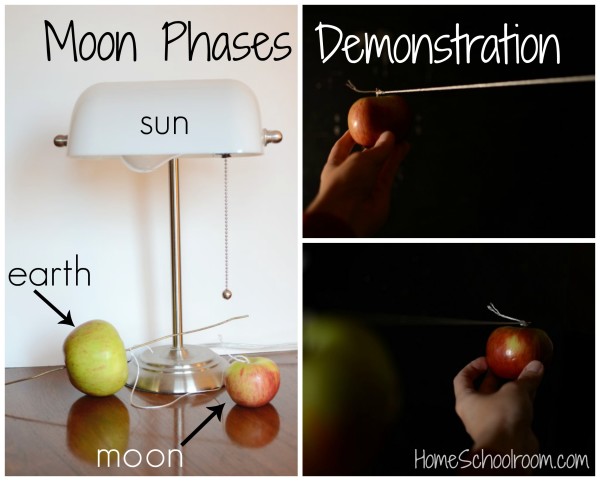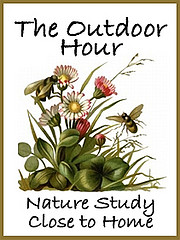Moon Nature Study

Why does the moon look so different each night?
Following along in nature study with Barb’s Outdoor Hour Challenges at the Handbook of Nature Study blog, we spent a month learning about the phases of the moon.
The first priority was observation: we looked at the moon any clear night from one full moon to the next. One night that involved a fun late evening ride in pajamas for a beautiful view from the local football field.
Note: I took the photo at the beginning of this post. If you want a good moon shot use your manual settings to basically underexpose the photo (my aperture was f/5.6, shutter speed 1/1250). To prevent blurring be sure to use a tripod, or if you’re like me and don’t want to go get your tripod just rest your camera on something stable–I used the post on my front steps. Voila, a moon picture to enjoy!
To record our observations we drew the moon several times for our nature journal as it changed throughout the month.

Tip: The kids traced a quarter to start with a nice circle and keep their moons a consistent size.
As with any study we read books from the library. Our favorite was The Moon by Seymour Simon. It has wonderful photos and information, including the stories of the Apollo space program.
Barb shared links to a couple kid-friendly YouTube videos that we enjoyed: one on the distance between the earth and moon in her Moon and Craters Study, and a terrific (and humorous) video on the phases of the moon in her post from a year ago on Moon Names.
To give my kids a better understanding of why we can only see parts of the moon sometimes we headed to the deep, dark basement for a hands-on demonstration of the moon phases. This idea was in the Handbook of Nature Study by Anna Botsford Comstock–a terrific nature study reference book.

Basically the lamp is your moon, the apple mounted on stiff wire (I cut a piece of wire coat hanger) is your earth, and the small apple tied to the wire is your moon. Position yourselves to look from the vantage point of the earth apple, and you will clearly see the phases in the light falling on the moon apple. I love simple demonstrations!

 Hi, I'm Heidi and I homeschool my two sweet kids. I want them to know that learning is an exciting lifelong adventure! We love great books, unit studies, notebooking, lapbooking, and hands-on learning.
Hi, I'm Heidi and I homeschool my two sweet kids. I want them to know that learning is an exciting lifelong adventure! We love great books, unit studies, notebooking, lapbooking, and hands-on learning.



